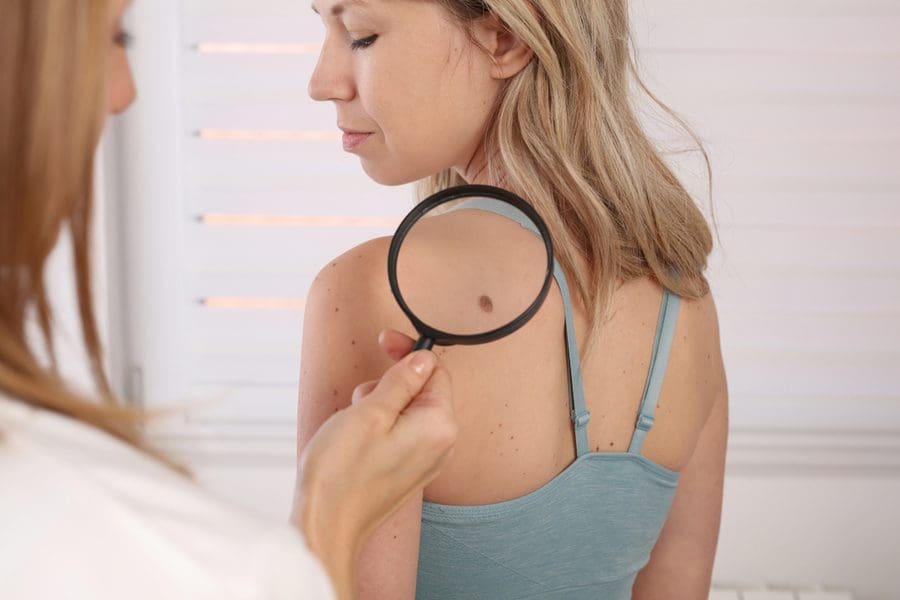Moles are extremely common; the majority of the time, they are completely harmless. However, there are cases where a mole can become cancerous and require medical treatment. Below, we break down what causes moles and when to seek out the advice of a professional.
What Is a Skin Mole?
Skin moles, also known as nevi (singular: nevus), are growths or a cluster of growths on the skin that are brown or black. They can appear anywhere on the body or mucous membranes. Most moles appear in the first 20 years of life, and it is normal to have anywhere from 10-40 moles in adulthood. Over time, moles can change in texture, grow hair, or not change at all; sometimes, they disappear.
Why Do Moles Form?
Moles occur when skin cells grow in a cluster instead of spreading out through the skin. These cells, called melanocytes, make the pigment that gives the skin its natural coloring. Moles can darken due to sun exposure or during adolescence or pregnancy.
Three Types of Moles
It’s important to know what moles look like so you know when something has changed or become of concern. The most common types of moles are:
- Congenital Nevi: Moles occurring at birth or during a baby’s first year are known as congenital nevi. You will most commonly find these moles on the trunk or limbs but can appear anywhere on the body.
- Common Nevi: A compound nevus is a round mole that is uniformly pigmented. It is usually pink, tan, or brown. These moles are typically flat and may have a dome shape.
- Dysplastic Nevi: Also called atypical moles, dysplastic nevi are often larger than a common mole and have irregular borders. They can vary in colors, ranging from pink to dark brown. Parts of the mole can be raised above the surface. A dysplastic nevus can develop into melanoma, and the more dysplastic nevi someone has, the higher risk they are of melanoma.
What to Look for in a Mole
Most moles are of no concern and will never turn cancerous; however, if you start noticing changes in the color, thickness, size, or shape of one of your moles, you should see your dermatologist. Also, seek medical care if the mole bleeds, oozes, itches, or is scaly or tender.
Look out for the ABCDEs, significant symbols of a cancerous mole:
- Asymmetry: When half of your mole does not match the other half
- Border: Ragged, blurred, or irregular edges to the mole
- Color: Multiple colors to one mole, including tan, brown, blue, white, or red
- Diameter: When the diameter of the mole is larger than a pencil eraser
- Elevation/Evolution: If the mole has become raised after being flat or changes in aspect over a short period
If you are concerned about any new or existing moles, we highly recommend making an appointment with a dermatologist who can adequately assess and treat your mole, if necessary!







